Operations With Fractions Teaching Resources
Teach the rules of fractions operations and give kids plenty of practice adding, subtracting, multiplying and dividing fractions this school year with printable worksheets, interactive digital activities and more curriculum-aligned teacher resources.
Created by the teachers on the Teach Starter maths team for Aussie teachers like you, each resource in this collection has been designed to integrate easily into your lesson plans. You'll even find editable options so you can easily adapt resources to differentiate instruction.
Whether you're new to teaching fraction operations or you could just a quick refresher, read on for some handy tips from our teacher team on teaching students how to add, subtract, multiply and divide fractions.
Operations With Fractions vs. Operations With Whole Numbers — What's the Difference?
Teaching your students about operations with fractions builds off the knowledge they have already gained about operations with whole numbers, but the nature of fractions and their representation of parts of a whole make this maths concept distinctly different. That can be a challenge for students to comprehend!
So, let's take a look at some of the differences at hand when we talk about completing the different maths operations with fractions vs. whole numbers.
| Operations With Whole Numbers | Operations With Fractions |
| Results are always whole numbers | Results may be fractions or mixed numbers |
| Does not require an additional step of finding a common denominator | May require finding a common denominator before the operation can be completed |
How Do You Add Fractions?
Once students understand the basics of fractions, it's time to teach how they work in relation to the different operations. We'll start with addition.
To add two or more fractions, students will need to:
- Find a common denominator (also known as the least common denominator or LCD) that is a multiple of the denominators of all the fractions. A common denominator can be found by finding the least common multiple (LCM) of the denominators.
- Once students have found the common denominator, they need to learn to convert each fraction so that it has the same denominator as the others. This is done by multiplying both the numerator and denominator of each fraction by the same number so that the denominator is equal to the common denominator.
- After converting the fractions to have the same denominator, they can add the numerators of the converted fractions.
- The denominator will be the least common denominator that was found earlier.
How Do You Subtract Fractions?
Finding the sum of fractions is one thing, but how do students find the difference?
- Students will again need to find a common denominator — a common multiple of the denominators of the fractions.
- Once they have found a common denominator, they can convert each fraction to have the same denominator as the others.
- After converting the fractions to have the same denominator, students can subtract the numerators of the converted fractions to find the numerator of the difference. The denominator of the difference will be the common denominator they found earlier.
How Do You Multiply Fractions?
Once students have the addition and subtraction operations with fractions worked out, they might find that multiplying is a lot simpler!
To multiply two or more fractions, you multiply the numerators (the top parts) together to get the numerator of the product.
Then you multiply the denominators (the bottom parts) together to get the denominator of the product.

How Do You Divide Fractions?
It's time for one last operation! Dividing fractions is one of the more complicated processes elementary students will have to handle when it comes to working with fractions. They will need to know how to invert fractions before they can dive in, a.k.a. flipping the numerator and denominator.
To divide fractions, teach students to:
- Invert the second fraction.
- Multiply the two fractions.
- Simplify the quotient — if possible — by finding the greatest common factor of the numerator and denominator and dividing both by it to get the final answer in simplest form.
How Do You Simplify Fractions?
Simplifying a fraction is pretty, well, simple! It means reducing it to its simplest form. To do this, students will find an equivalent fraction that has the same value but with a smaller numerator and denominator. The numerator and denominator of a simplified fraction have no common factors other than 1.
To simplify a fraction, you can divide both the numerator and denominator by their greatest common factor. You'll then need to keep dividing by the greatest common factor until it is equal to 1, which means that the fraction can't be simplified any further. And there you have it — a simplified fraction!
- Plus Plan
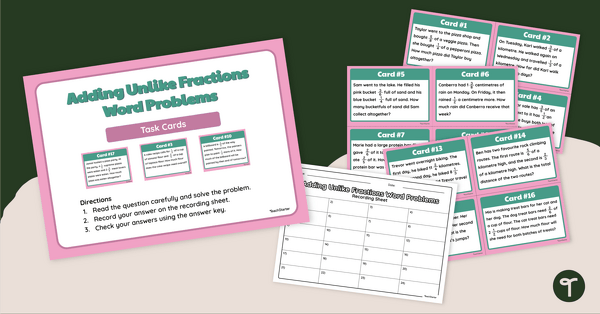
Adding Unlike Fractions Word Problems Task Cards
Use this set of word problems for adding fractions with unlike denominators to help your students practise this important maths skill.
- Plus Plan
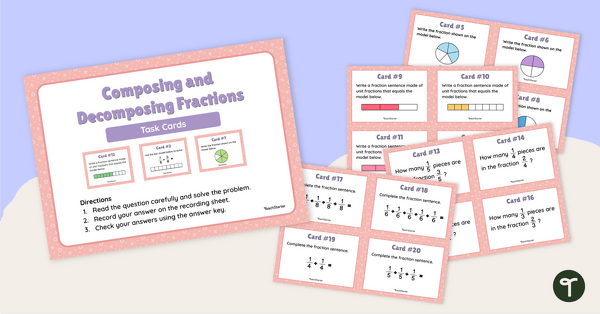
Composing and Decomposing Fractions Task Cards
Get your students composing and decomposing fractions with this set of task cards perfect for maths groups.
- Plus Plan
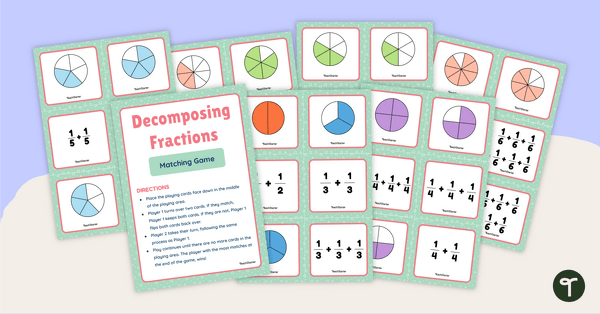
Decomposing Fractions Matching Game
Get your students decomposing fractions with this fun matching game for maths groups!
- Plus Plan

Building Fractions – Cut and Paste Worksheet
Get your students to build a fraction out of ice cream scoops with this cut-and-paste worksheet perfect for your next fractions lesson.
- Plus Plan
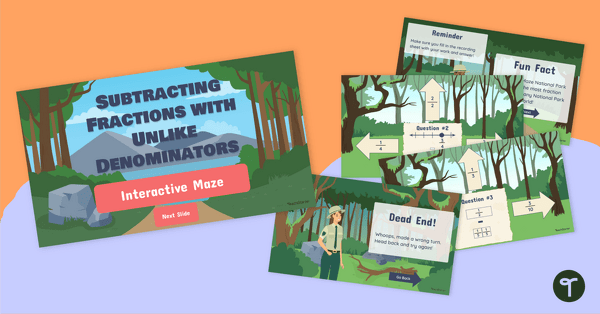
Subtracting Fractions with Unlike Denominators Interactive Maze
Get your students to subtract fractions with unlike denominators to find their way out of the digital maze!
- Plus Plan
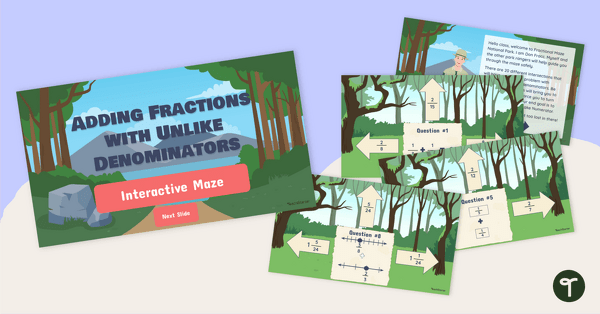
Adding Fractions with Unlike Denominators Interactive Maze
Get your students to add fractions with unlike denominators to find their way out of the digital maze!
- Plus Plan
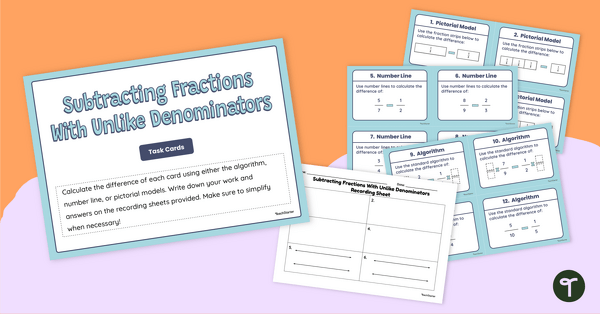
Subtracting Fractions With Unlike Denominators Task Cards
Get your students subtracting fractions with unlike denominators using this set of task cards focusing on a variety of strategies.
- Plus Plan
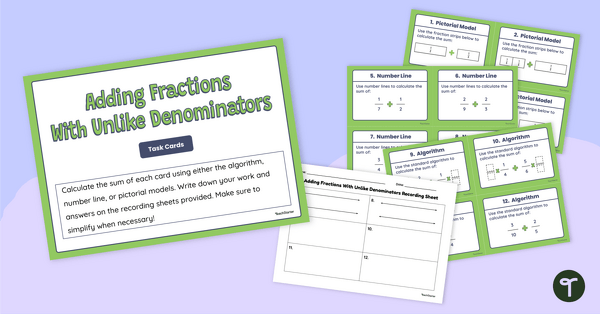
Adding Fractions With Unlike Denominators Task Cards
Get your students to add fractions with unlike denominators using this set of task cards focusing on a variety of strategies.
- Plus Plan
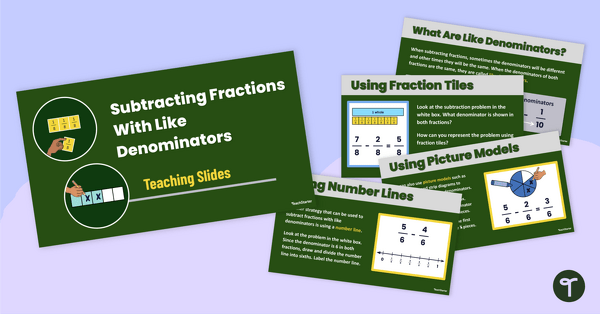
Subtracting Fractions With Like Denominators Teaching Slides
Teach your students how to subtract fractions with like denominators using a variety of strategies with this comprehensive slide deck.
- Plus Plan
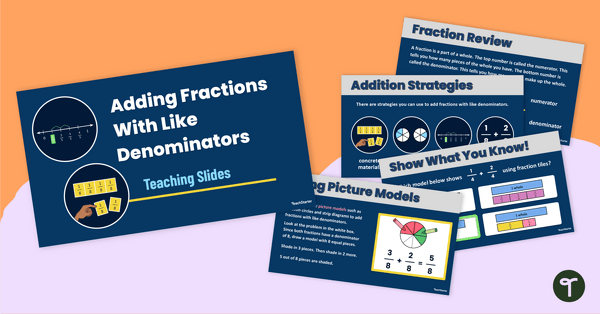
Adding Fractions With Like Denominators Teaching Slides
Teach your students how to add fractions with like denominators using a variety of strategies with this comprehensive slide deck.
- Plus Plan
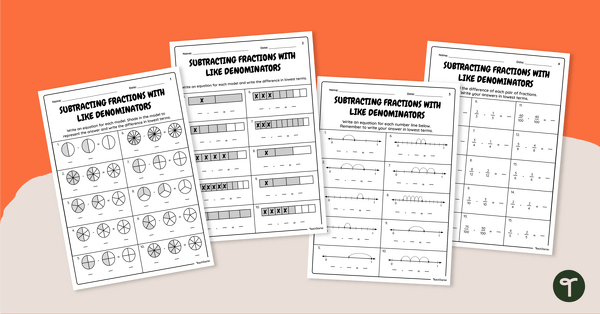
Subtracting Fractions With Like Denominators Worksheets
Download this set of subtracting fractions with like denominators worksheets to help your students practise this important maths skill.
- Plus Plan
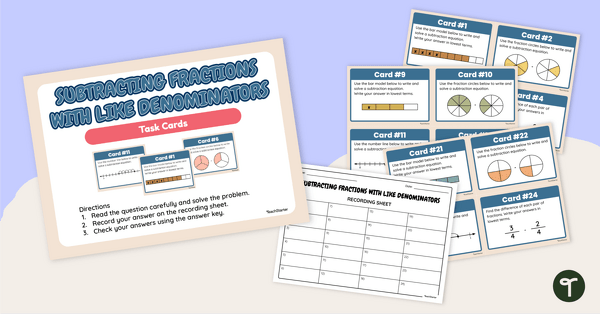
Subtracting Fractions With Like Denominators Task Cards
Get your students subtracting fractions with like denominators using this set of task cards focusing on a variety of strategies.
- Plus Plan
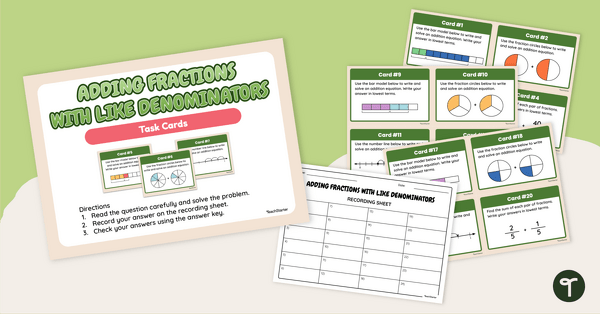
Adding Fractions With Like Denominators Task Cards
Get your students adding fractions with like denominators using this set of task cards focusing on a variety of strategies.
- Plus Plan
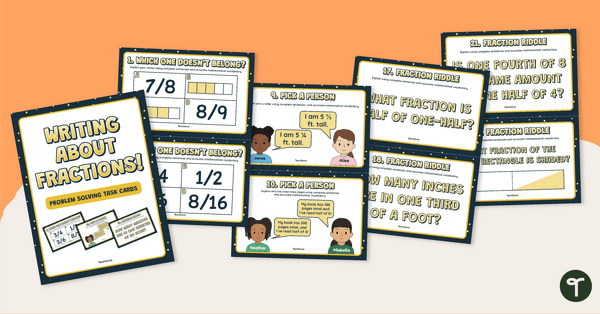
Writing About Fractions- Task Cards
Review fraction concepts and practice mathematical constructed response writing with a set of writing about fractions task cards.
- Plus Plan
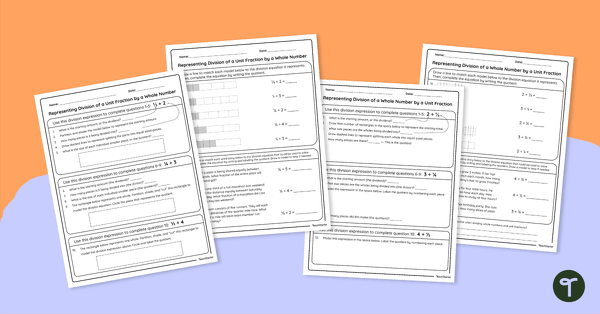
Representing Unit Fraction & Whole Number Division – Worksheet
Practise modelling and solving questions related to unit fractions and whole number division with this worksheet.
- Plus Plan
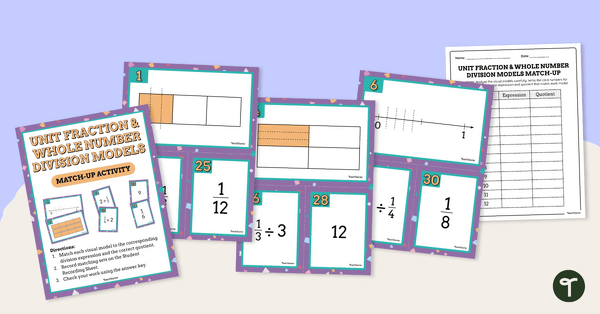
Unit Fraction & Whole Number Division Models – Match-Up Activity
Practise how to divide a unit fraction by a whole number and divide a whole number by a unit fraction with this match-up activity.
- Plus Plan
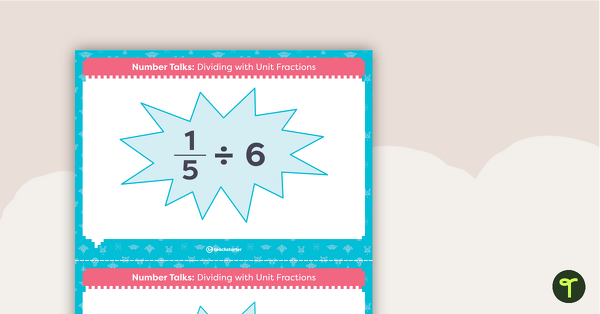
Number Talks - Dividing with Unit Fractions Task Cards
Build fractional reasoning with this set of 24 task cards.
- Plus Plan
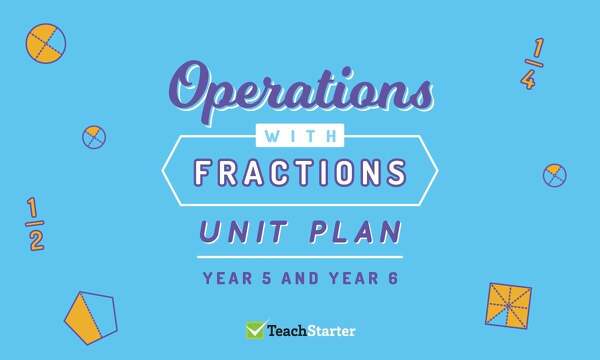
Operations with Fractions Unit Plan - Year 5 and Year 6
This Mathematics unit covers a range of concepts relating to fractions.
- Plus Plan
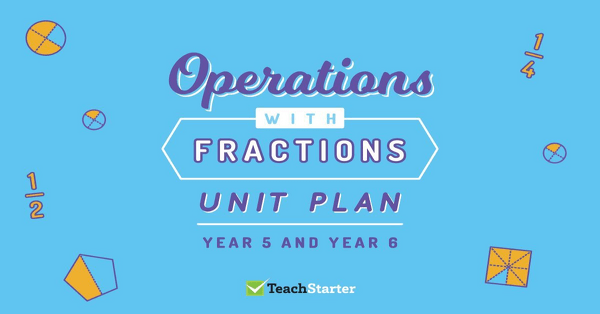
Operations with Fractions Assessment - Year 5 and Year 6
An assessment task in which students will demonstrate an understanding of operations involving fractions.
- Plus Plan
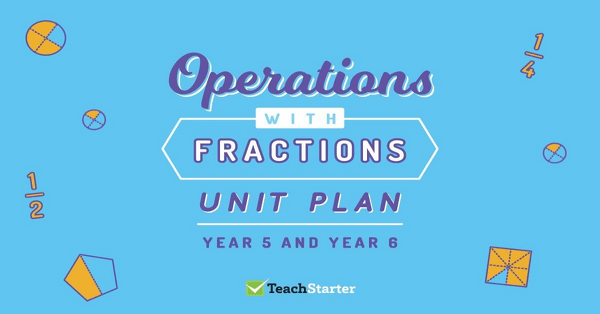
Adding and Subtracting Related Fractions
A 60 minute lesson in which students will add and subtract fractions with related denominators.
- Plus Plan
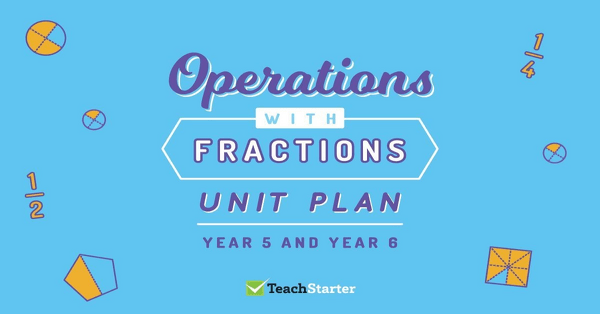
Adding and Subtracting Like Fractions
A 60 minute lesson in which students will add and subtract fractions with the same denominator.
